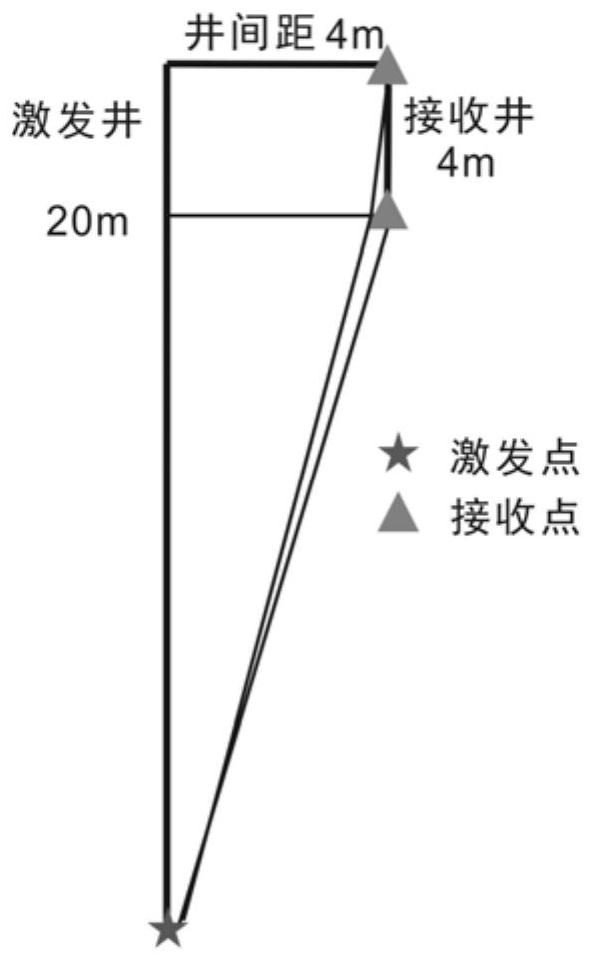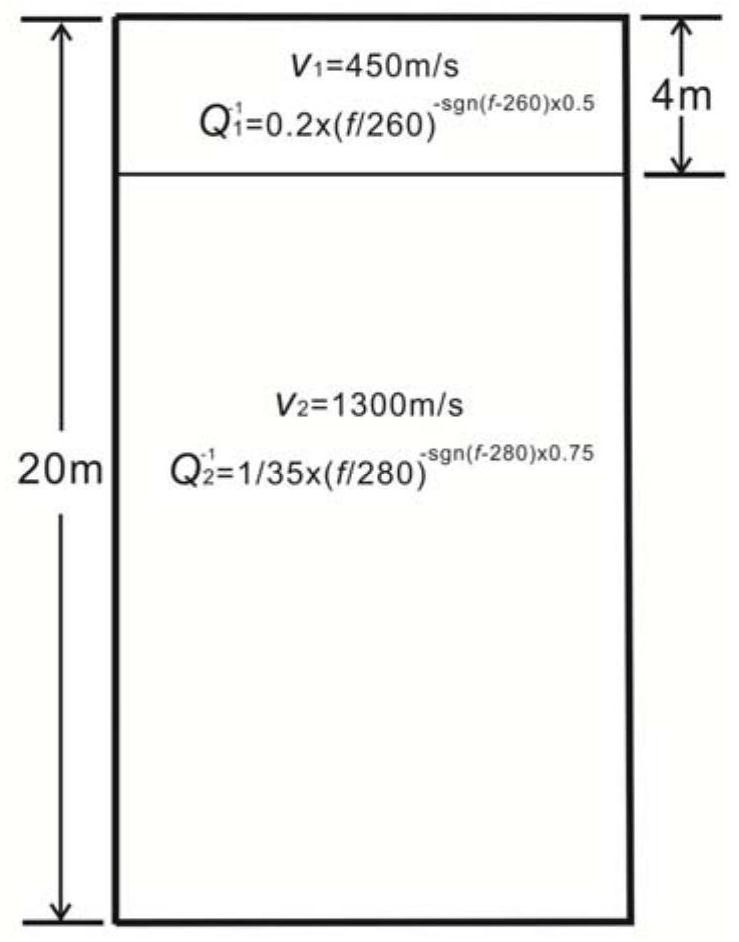Nonlinear inversion method and system for quality factor q based on simulated annealing
A technology of simulated annealing method and quality factor, which is used in seismology, instruments, measuring devices, etc., can solve problems such as large errors, and achieve the effect of reducing difficulty, improving accuracy and stability, and improving reliability.
- Summary
- Abstract
- Description
- Claims
- Application Information
AI Technical Summary
Problems solved by technology
Method used
Image
Examples
Embodiment 1
[0079] Embodiment 1: model test
[0080] In order to prove the correctness and effectiveness of the method, and to show that the method has higher accuracy, a model experiment is used to illustrate below.
[0081] Such as figure 1 As shown, a two-well micro-logging observation system with one shot excitation and two reception channels is designed. Assume a near-surface depth of 4 meters. The depth of the excitation well is 20 meters, and the bottom of the well is used for excitation, and the excitation depth is 20 meters. The depth of the receiving well is 4 meters, and a geophone of the same type is installed at the wellhead and the bottom of the well. The well spacing is 4 meters.
[0082] Such as figure 2 As shown, the design model is that the velocities of the low-velocity layer and the deceleration layer are respectively v 1 =450m / s,v 2 =1300m / s; the quality factors of the low-velocity layer and the decelerating layer are respectively (i.e. Q -1 (f 0 )=0.2, f ...
Embodiment 2
[0086] Example 2: Actual Data
[0087] Such as Figure 6 As shown, this embodiment is an application example of block A of an oil field. The terrain in this area is flat, and the near-surface structure is relatively simple. It is divided into two sets of strata, the low-velocity layer and the velocity-reducing layer. The thickness of the low-velocity layer is about 4 meters, and the thickness of the velocity-reducing layer is more than 40 meters. In the stimulation well, the minimum depth of the stimulation well is 2 meters, the maximum depth of the stimulation well is 16 meters, the depth of the shot point is 2 meters apart, and a total of 8 shots are fired. In the receiving well, a geophone of the same type is arranged at the wellhead and the bottom of the well respectively. Well spacing is 4m. The invention extracts 16 meters from the bottom of the well for excitation, and the two channels received by the well head and the bottom of the well carry out nonlinear inversion...
PUM
 Login to View More
Login to View More Abstract
Description
Claims
Application Information
 Login to View More
Login to View More - R&D
- Intellectual Property
- Life Sciences
- Materials
- Tech Scout
- Unparalleled Data Quality
- Higher Quality Content
- 60% Fewer Hallucinations
Browse by: Latest US Patents, China's latest patents, Technical Efficacy Thesaurus, Application Domain, Technology Topic, Popular Technical Reports.
© 2025 PatSnap. All rights reserved.Legal|Privacy policy|Modern Slavery Act Transparency Statement|Sitemap|About US| Contact US: help@patsnap.com



